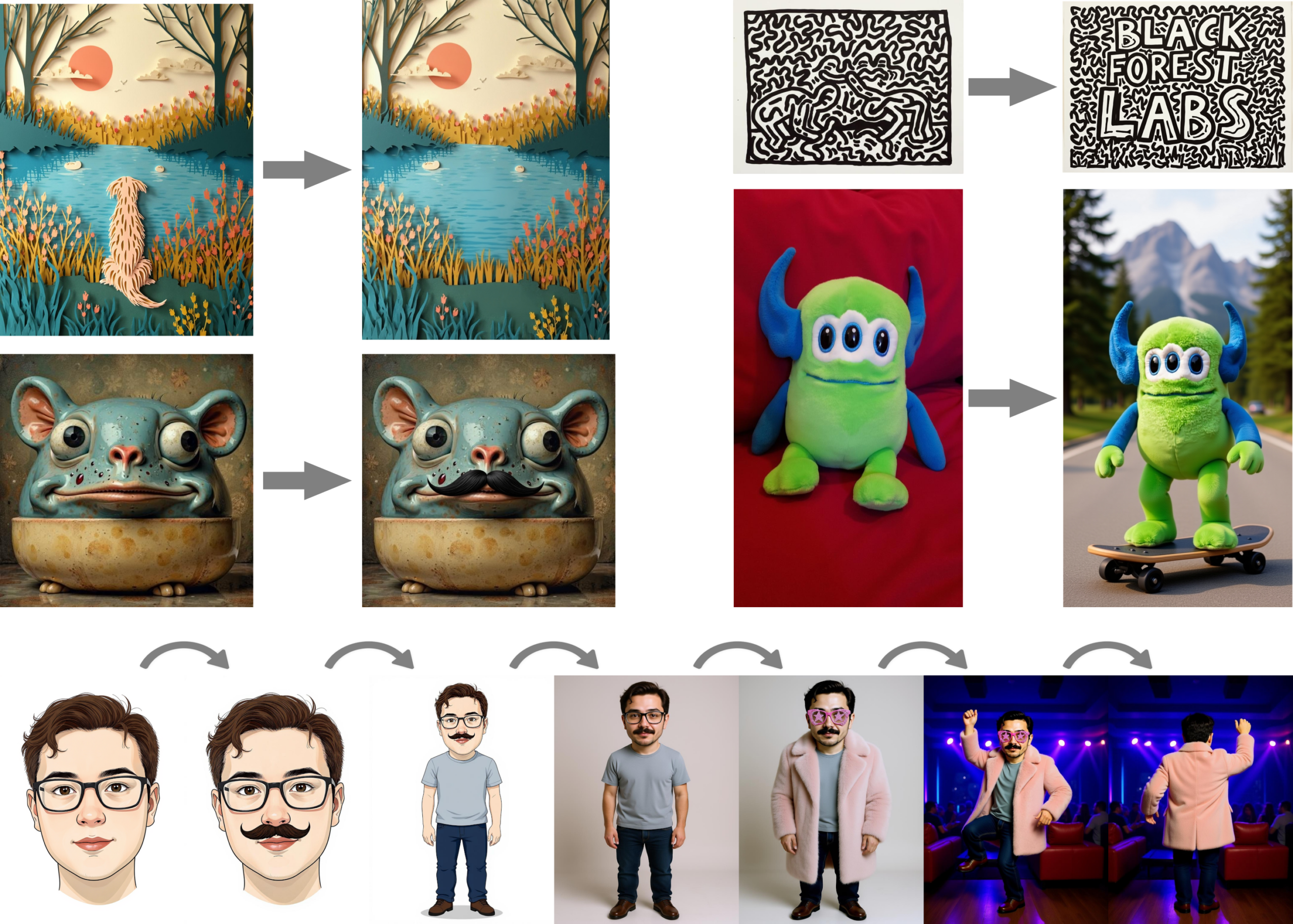
Table of Contents
Overview
FLUX.1 Kontext by Black Forest Labs is making significant impact in the world of AI-powered image manipulation. This powerful model is specifically designed for in-context image editing, offering an unprecedented level of control and consistency. What’s particularly noteworthy is that its 12B parameter dev version is now available as open-weight, bringing top-tier character and style consistency within reach on standard consumer hardware. This marks a significant step forward for developers and creators looking for robust, local AI solutions.
Key Features
Delving deeper into what makes FLUX.1 Kontext stand out, here are its core capabilities:
- 12B Open-Weight Model: The release of this substantial 12-billion parameter model as open-weight provides flexibility for developers to inspect and integrate it into their applications, though commercial use requires a separate license.
- In-Context Image Editing: This feature allows the model to understand and adapt to the context of existing images, enabling seamless edits that blend naturally with the original style and content through simple text instructions.
- High Style and Character Consistency: A standout capability, FLUX.1 Kontext excels at maintaining consistent artistic styles and character appearances across multiple generated or edited images, crucial for series or storytelling applications.
- Runs on Consumer GPUs: Unlike many high-end AI models that demand expensive cloud infrastructure, FLUX.1 Kontext is optimized to run efficiently on readily available consumer-grade graphics cards with 12 billion parameters.
- Framework Compatibility: This version offers day-zero support for popular inference frameworks including ComfyUI, HuggingFace Diffusers, and TensorRT, making it accessible through multiple interfaces.
How It Works
FLUX.1 Kontext operates on a sophisticated flow matching architecture, bringing advanced AI capabilities directly to your machine. Users initiate the process by providing reference images along with text prompts. The model then leverages its extensive 12-billion parameters to process this input through its unified image generation and editing architecture. The system performs surgical edits by understanding both the semantic context and visual elements, meticulously ensuring that outputs maintain stylistic coherence and subject fidelity. All processing occurs locally on standard consumer hardware, eliminating dependency on cloud services.
Use Cases
The unique capabilities of FLUX.1 Kontext open up a wide array of possibilities for creators and developers:
- AI-assisted Image Editing: Streamline complex image manipulation tasks with instruction-based editing, allowing the AI to intelligently adjust specific elements while maintaining overall consistency and natural integration.
- Style Transfer for Illustrations: Apply distinct artistic styles from reference images to new content, perfect for creating cohesive visual series or transforming existing artwork while preserving character identity.
- Character Consistency in Storytelling: Ensure that characters in comics, animations, or visual novels maintain consistent appearance across different scenes, poses, and environments, critical for narrative integrity.
- Iterative Content Creation: Build upon previous edits across multiple iterations while ensuring characters, identities, styles, and unique features remain consistent throughout various scenes and perspectives.
Pros \& Cons
Every powerful tool comes with its own set of advantages and considerations. Here’s what makes FLUX.1 Kontext compelling and where challenges may arise.
Advantages
- Open-weight and Accessible: The open-weight nature provides developers with transparency and the ability to integrate the model into custom workflows, with multiple framework support available.
- High Fidelity Editing: Users can expect exceptionally detailed and accurate image edits that maintain surgical precision while preserving context and character consistency across multiple iterations.
- No Cloud Dependency: Operating locally on consumer hardware means no recurring cloud costs, enhanced data privacy, and uninterrupted access even offline.
- Multiple Interface Options: Unlike purely command-line tools, FLUX.1 Kontext is accessible through user-friendly platforms like ComfyUI, Replicate, and HuggingFace Diffusers.
Disadvantages
- Commercial Licensing Costs: While the dev version is free for non-commercial use, commercial applications require a paid license at \$999 per month, which may be prohibitive for smaller businesses.
- Technical Setup Requirements: Optimal performance still requires technical understanding for local deployment, though platform integrations have simplified access considerably.
- Hardware Requirements: The 12B parameter model demands substantial GPU memory, requiring modern consumer graphics cards for optimal performance.
How Does It Compare?
When evaluating FLUX.1 Kontext against other prominent AI image generation and editing tools in 2025, its unique positioning becomes clear:
- ChatGPT-4o: OpenAI’s latest model introduced native image generation in March 2025, offering excellent integration with conversational AI. However, FLUX.1 Kontext provides superior character consistency and specialized editing capabilities, making it more suitable for iterative creative workflows requiring precise control.
- Leonardo AI: This platform has integrated FLUX.1 Kontext alongside GPT-Image-1, recognizing its superior editing capabilities. While Leonardo offers a more accessible interface, FLUX.1 Kontext provides the underlying technology that powers many of these advanced editing features.
- Google Imagen 4: Released in May 2025, Imagen 4 offers impressive photorealism and can generate images up to 8192×8192 resolution. However, FLUX.1 Kontext specializes in maintaining consistency across edits and character preservation, areas where Imagen 4 is less focused.
- Runway: While Runway remains primarily cloud-based and focuses on video generation, FLUX.1 Kontext offers local processing and specialized image editing capabilities. The open-weight model provides greater control and transparency compared to Runway’s proprietary approach.
- Midjourney V7: Known for artistic quality and style consistency, Midjourney requires personalization training and operates through Discord. FLUX.1 Kontext offers more direct control over editing processes and can be integrated into custom workflows, making it more suitable for professional applications.
Final Thoughts
FLUX.1 Kontext by Black Forest Labs represents a significant advancement in in-context image editing, particularly for developers and professional creators. Its 12B open-weight model running on consumer hardware with exceptional consistency capabilities makes it a powerful tool for local AI applications. While commercial licensing costs and technical setup requirements may present barriers for some users, the availability through platforms like ComfyUI and HuggingFace Diffusers has made it more accessible than initially apparent. The model’s strength in character preservation, iterative editing, and style consistency positions it as an essential tool for anyone serious about professional AI-assisted visual creation and storytelling applications.

